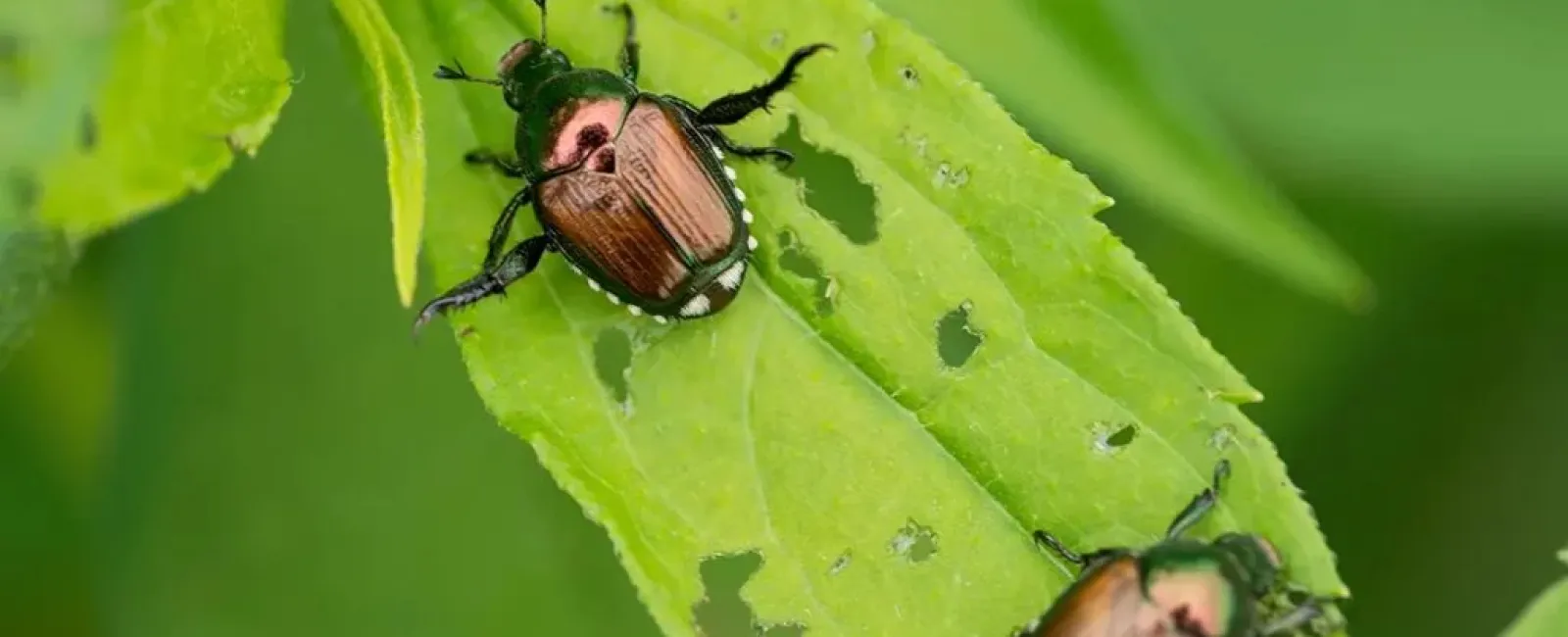Your Guide to Identifying Common Garden Pests

Nothing is more frustrating than pouring time and effort into nurturing your plants, only to have them devoured by hungry critters. Your garden is your sanctuary, a place where you cultivate peace of mind alongside your cucumbers and petunias.
So when unwelcome guests arrive to eat into your plants as well as your time and energy, push them away with six easy steps to identify and eliminate these pesky pests.
Japanese Beetles and the Plants That Block Them
These emerald green scarabs are an invasive species that can be found feeding on all types of plants across America.
We start with Japanese beetles to introduce you to a centuries-old eco-friendly technique to keep your garden pest free: companion planting.
The USDA suggests you plant geraniums in your garden plot as it will paralyze any Japanese beetle that takes a bite for up to 24 hours. It's a win-win! You get to add beautiful flowers to your garden while beetles stay away from your plants as they enjoy an involuntary nap.
Getting Rid of Grubs
Before beetles are fully grown, they live in the ground as little white grubs and feed on roots. If you see yellowing in your grass or garden, it could be them. Try introducing beneficial nematodes to your ecosystem to hunt them down and protect your plants.
Keeping Cutworms Away From Your Vegetables
Cutworms are moth larvae that are similar to grubs in appearance. They are smooth, hairless, and can grow up to two inches long. What makes them particularly problematic is their habit of eating plants at the stem, cutting them down in the process.
Tansy requires little upkeep and contains a chemical that is toxic to cutworms but harmless to you and your plants. You should also turn your soil every fall to give your friendly neighborhood birds a chance to pluck them up for you.
Creating a Grasshopper-Repellent Garden
Grasshoppers can jump, fly, grow up to the size of your hand, and eat just about anything that's green. If you see holes chewed through your leaves and stems, that could be their handiwork.
Strong odors can repel grasshoppers and other pests. Try some DIY methods by spraying vinegar or garlic juice on nearby plants to keep these hungry hoppers away.
Avoiding an Aphid Infestation
If you have ever dealt with aphids, you have probably asked, "Why are there so many?" These tiny green plant-eating machines multiply rapidly and leave a sticky residue called "honeydew" in their wake.
To kick aphids to the curb, you want to attract ladybugs to your garden. Plant dill or fennel, and the ladybugs will make themselves at home as they chow down on their favorite food.
Protecting Your Garden Against Ants
A few ants in your garden can actually be beneficial for their tendency to eat the eggs and larvae of other pests, but having too many ants is not desirable.
Attack the food chain from the top. Many species of ants rely on aphid honeydew as a food source. Get rid of them, and the ants will scatter. If you see the anthill, pour boiling water down the entrance. That will make anyone leave in a hurry!
Count on the Services Pros to get the Job Done
If you have tried everything and you still can't keep pests out of your garden, or you feel overwhelmed just thinking about them, it's time to call in the professionals. Let Greenix attack the pests head-on, and get back to making your garden the happy place it is meant to be.

